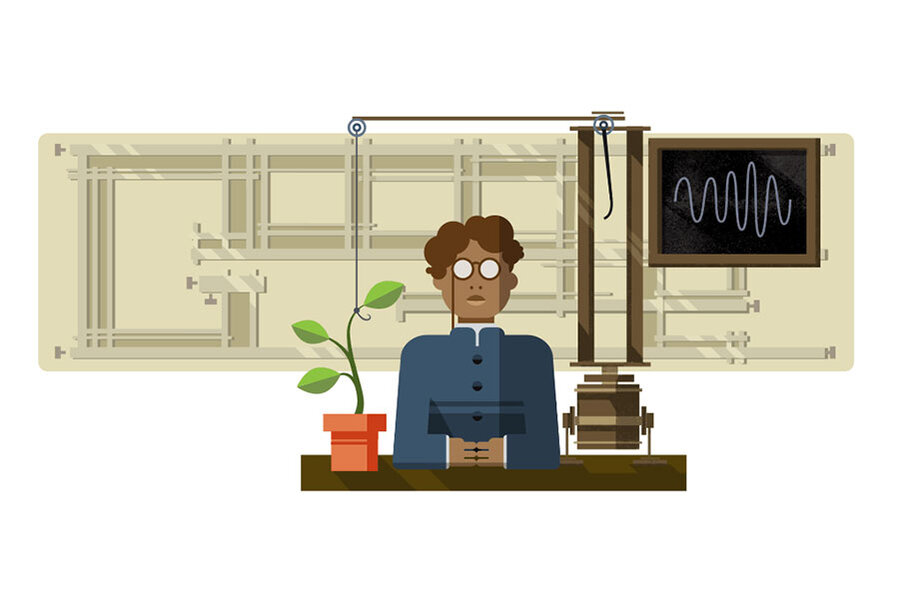Google Doodle: Why should we know about Jagadish Chandra Bose?
Loading...
To celebrate a pioneer of radio, botany, and even Bengali science fiction, Google is featuring a doodle of Jagadish Chandra Bose on what would be the polymath’s 158th birthday.
The doodle illustration, showing Dr. Bose with the crescograph instrument he invented to measure plant growth and movement, shows up on the Google home page for users in several countries including the United States, France, Japan, and, of course, India – Bose’s home country (although his birthplace is in modern-day Bangladesh).
A Google Doodle is a celebration of interesting events and anniversaries "that reflect Google’s personality and love for innovation." The first doodle ever publicly featured on the Google home page was a depiction of Bastille Day.
It’s easy to see why Google would commemorate a Renaissance man like Bose, too.
Bose laid the groundwork for our understanding of plant empathy. He used the crescograph instrument he invented to magnify plants by 10,000 times. In doing so, he measured plant growth and movement with extraordinary accuracy, revealing that plants’ growth changes according to different stimuli.
Pleasant sounds, he found, encouraged growth, while harsh ones stunted it. He argued that this proved that plants, like humans, possessed a nervous system. He went on to test how plant tissues react to seasonal changes, chemical inhibitors, and temperature variations – all to prove they “feel pain and understand affection,” according to the British online newspaper The Independent. That idea – that plants feel, breathe, and reproduce much like humans – is now taught in middle school, as Quartz writes.
While Bose is best known for his work in biophysics, he is also considered a father of the radio. In 1895, he demonstrated the science of electromagnetic waves. In a public demonstration in Calcutta (now Kolkata), he sent electromagnetic waves across 75 feet and through a wall to remotely ring a bell and explode gunpowder, according to India Today.
He also invented the Mercury Coherer, a radio wave receiver that was used by Guglielmo Marconi to build an operational two-way radio. While the Italian inventor was recognized for his two-way radio, Bose remained relatively unknown because he was reluctant to patent his inventions.
Much like Anton Chekhov in Russia, Bose was in the vanguard of literature in his native India. Bose is considered to be the patriarch of Bengali science fiction. In one of his books, “Palatak Toofan,” he described how a bottle of hair oil could quell a cyclone.
Bose, who died at the age of 78, received a lasting tribute several decades ago: a small crater on the moon is named after him. The Bose Crater, 56 miles in diameter, is located on the far side of the moon.







